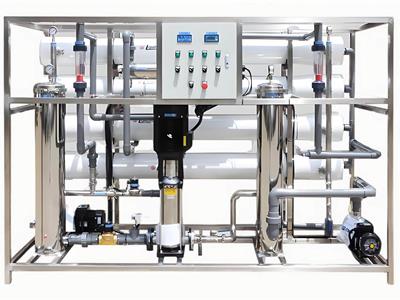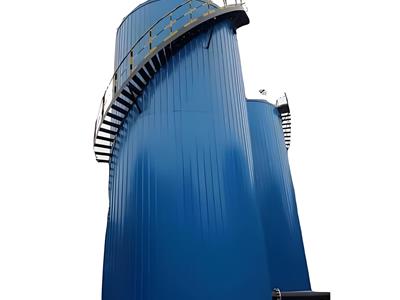- 2025-07-11
Asia
Asia
Asia is the largest and most populous continent in the world. Water resources are crucial for the ecology and economic development of Asia. The distribution of water resources in Asia is extremely uneven, with both regions rich in water resources and areas suffering from severe water shortages. The Qinghai-Tibet Plateau is known as the "Asian Water Tower," providing water sources for many of Asia's major rivers.
The following are some important aspects of water resources in Asia:
1. Water resource distribution:
Water-rich regions:
Southeast Asia, South Asia, and parts of East Asia including the Yangtze River Basin have relatively abundant water resources.
Water-scarce regions:
Central Asia, West Asia, and North Africa face water scarcity and drought issues with relatively scarce water resources.
2. Important rivers:
Yangtze River: The largest river in Asia and the third largest in the world, originating from the Qinghai-Tibet Plateau and flowing through multiple provinces and municipalities of China before emptying into the East China Sea.
Mekong River: Originating from China, it flows through several Southeast Asian countries and is a crucial water source in the region.
Ganges: A major river in India, vital for agriculture and daily life in the Indian subcontinent.
Euphrates and Tigris Rivers: Flowing through the Middle East, they are among the cradles of human civilization, crucial for regional development, but currently facing issues of water scarcity.
3. The "Asian Water Tower":
The Qinghai-Tibet Plateau serves as a vital "Asian Water Tower," providing water sources for many major Asian rivers, including the Yangtze, Mekong, Ganges, and Yellow Rivers.
The Qinghai-Tibet Plateau receives over 1 trillion cubic meters of clean water vapor, with its reservoir capacity growing dynamically through the water vapor transport by the monsoon and westerly circulation systems.
4. Water resource issues:
Water scarcity:
Some regions in Asia face severe water scarcity, affecting agricultural production, industrial development, and residents' lives.
Water pollution:
Water pollution caused by industrial wastewater, agricultural pollution, and domestic sewage severely affects water quality, threatening human health and ecological environments.
Poor water resource management:
Poor water resource management, over-exploitation, and irrational utilization have exacerbated water shortages and environmental degradation.
5. Water resource protection and sustainable use:
Strengthening Water Resource Conservation: Protecting water resources and reducing water pollution are important tasks for Asian countries.
Rational Utilization of Water Resources: Promote water-saving technologies, develop water-saving agriculture, and improve the efficiency of water resource utilization.
International Cooperation: Enhance water resource cooperation among Asian countries to jointly address water resource challenges.
In summary, water resources in Asia are crucial for the ecological environment and economic development. Asian countries should strengthen cooperation to jointly address water resource challenges and achieve sustainable utilization of water resources.
Atlas of Asian Water Resources: Imbalanced Lifelines
Water's Latitude and Longitude
From the Yangtze River, carrying the snow and ice from the Qinghai-Tibet Plateau to the East China Sea, to the Ganges nourishing the ancient altars of the South Asian subcontinent; from the Mekong River connecting rice civilizations across six countries, to the Tigris River nurturing the Mesopotamian plain—Asia's water systems are like the veins of the earth. Yet, beneath the abundance lies division: Southeast Asia's rainy zones receive over 3,000 millimeters of precipitation annually, while the Karakum Desert in Central Asia sees less than 100 millimeters. The sharpest contrast unfolds in the Qinghai-Tibet Plateau, known as the "Asian Water Tower," which harbors over 90,000 glaciers, supporting over one billion downstream people, while its edge, the Taklamakan Desert, is dubbed the "Sea of Death."
Four Crises
In the Thar Desert in northwestern India, women still use camel caravans to fetch water, a thousand-year-old tradition that consumes six hours per trip. When climate change distorts the monsoon rhythm, the floods that submerged one-third of Pakistan in 2022 coincided with Thailand's once-in-a-decade drought. More insidious threats come from pollution: 75% of monitoring points in the Ganges River basin exceed the standard for E. coli by a hundredfold, and rice fields in Vietnam's Mekong Delta suffer a 15% annual yield loss due to saltwater intrusion. The cost of industrialization is evident on the Yangtze River—despite the "Ten-Year Fishing Ban," microplastic concentrations in certain sections are still three times the global average for rivers.
Breakthrough Solutions
Asia is addressing these challenges with diverse wisdom:
Super Projects Diverting Water Streams: China's South-to-North Water Diversion Central Route supplies the North China Plain with water equivalent to the total water storage of Taihu Lake annually, while Israel's desalination plants provide 70% of the country's drinking water.
Micro-innovations Revive Dry Lands: In India's Rajasthan, ancient stepwell water storage systems are being rejuvenated, while in Cambodia, floating villages on Tonle Sap Lake are adopting clay pot water filtration technology.
Cross-border Collaboration Sets a Model: The Mekong River Commission has established a six-country flood-drought warning alliance, with China and Kazakhstan's transboundary river agreement pioneering water rights trading.
Field Water Conservation Revolution: Vietnamese rice farmers are adopting the "dry-wet alternation" irrigation method, reducing water usage by 30% without compromising yields.
Future Water Blueprint
When vertical farms in the Dubai desert cultivate 15 times the crops per drop of water, and when wind farms at the mouth of the Yangtze drive the world's largest desalination plant, Asia is turning crises into innovation engines. Just as the Ganges and the Yangtze will eventually meet in the Pacific, water-saving technologies, smart water networks, and waves of international collaboration will ultimately converge into a flood that nourishes the future.






